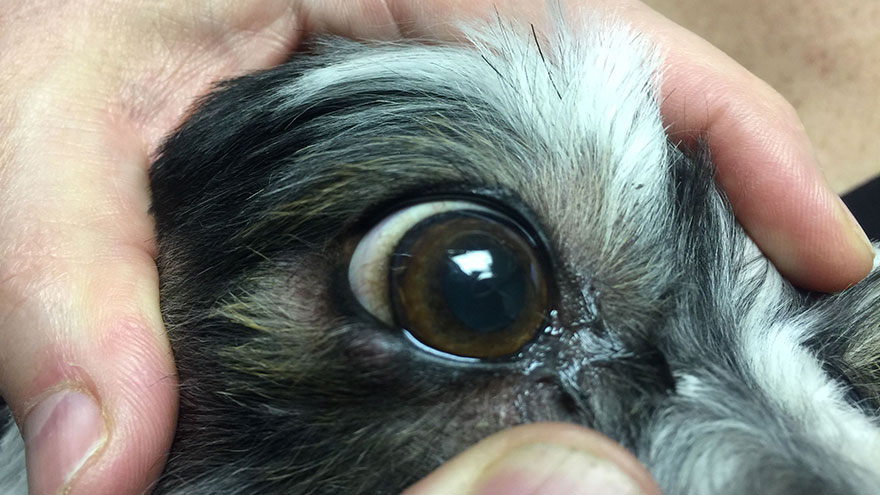What Are the Treatments for a Meibomian Cyst in Dogs?
If you notice a small growth on your dog’s eyelid, it could be a meibomian cyst or growth. Call your vet and have your pet examined. These growths are the most common of eye tumors; most are benign. However, the growth does require removal — the primary treatment — or it can continue to enlarge and affect your dog’s vision.

Meibomian Glands
Meibomian glands are sebaceous glands on the edge of the dog’s eyelid. Their function is supplying sebum, or oil, to the eye. That sebum prevents evaporation of tear film over the cornea. Also known as a chalazion, a meibomian cyst is a benign type of tumor growing out of the gland. It doesn’t hurt, but it can ulcerate. That ulceration and tumor growth can lead to issues with the dog’s cornea and conjunctiva.
Meibomian Growth Treatment
Treatment consists of surgical removal, whether via scalpel or laser. If the growth is very small, your dog might require only a local anesthetic and sedation, rather than general anesthesia. While your own vet can perform the surgery, it might be advisable to consult a veterinarian specializing in ophthalmology.
Follow-Up Care
After the surgery, your dog might have blood in his tears for several days. That’s normal. His eye might stay swollen for a week or so. He’ll wear an Elizabethan collar to prevent scratching at the surgery site. You’ll notice pink tissue emerging about two weeks after surgery, and eventually white hairs may develop near the site. Usually, the skin returns to its normal shade within a few months, but the white likely will remain. Most meibomian cysts or tumors don’t grow back, but it can happen. A new growth on the eyelid can occur. Check your dog’s eyes regularly for growth recurrence or new developments; call your vet if you see either type.
Meibomian Tumors
While most growths on the meibomian gland are benign, occasionally malignancies occur. These tumors can metastasize to other parts of the dog’s body via the lymph nodes. Middle-aged to elderly dogs are most likely to develop cancerous meibomian tumors; certain breeds appear genetically predisposed.
These include the standard poodle, Shih Tzu, West Highland white terrier, Labrador retriever, Samoyed, Siberian husky and Alaskan malamute. The tumors can either grow outwards or into the skin. Your vet must aspirate cells from the tumor using a fine needle to make a diagnosis. Treatment consists of surgical removal, sometimes followed by radiation.
You Might Also Like :: How to Remove Embedded Ticks or Fleas

